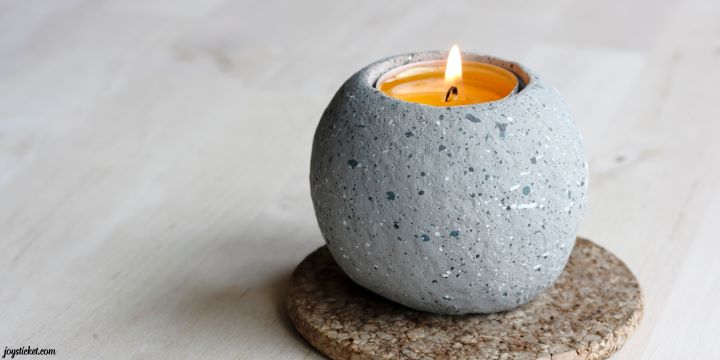
Scented Candles: Enhancing Home Atmosphere & Wellbeing
Table of Contents:
- The Significance of Scent in Our Lives
- Choosing the Perfect Scent for Every Room
- The Art and Science of Candle Making
- Safety Tips for Burning Candles at Home
- Scented Candles and Mental Wellbeing
- Seasonal Scents and Their Influence on Mood
- Decoding Candle Labels: Understanding Materials and Ingredients
- DIY Candle Projects: Crafting Custom Scents at Home
Choosing the Perfect Scent for Every Room
To fully harness the potential of scented candles, one must consider the unique character of each room. The refreshing aroma of lemon might resonate well with a kitchen, bringing to mind clean freshness, while the soothing bouquets of lavender or chamomile in the bedroom foster a restful environment conducive to a peaceful night’s sleep. Living rooms, the hub of home gatherings, benefit from universally pleasing floral or vanilla notes that can put guests at ease and create a welcoming atmosphere. Meanwhile, a bathroom transformed by eucalyptus or mint offers a spa-like retreat, a relaxing and refreshing start or end to the day. Choosing scents that complement the room’s function enhances aesthetic appeal and augments the room’s functional vibe, creating a holistic sensory experience that aligns with each space’s purpose.
The Significance of Scent in Our Lives
The olfactory sense, seemingly simple, holds the unparalleled power to evoke the past and color the present. Imagine entering a room where the subtle fragrance of luxury candles greets you, ushering in a sense of tranquility or invigorating your spirit, depending on the chosen scent. This transformative power has deep roots in our neurological pathways, linking smells to the limbic system responsible for memory and emotion. It’s why a whiff of a particular scent can instantly transport you to a cherished moment or a much-loved place. Scented candles, above sheer décor, thus become essential in crafting a living space’s character and atmosphere. From evoking nostalgia to momentarily altering mood, the right fragrance can be a game-changer, transforming dull settings into spaces teeming with emotion and vibrancy.
The Art and Science of Candle Making
Every scented candle is a piece of art, meticulously crafted to delight the senses while ensuring superior performance. The candle-making process is a scientific endeavor as much as it is an artistic one. It starts with choosing the suitable wax—a backbone that holds the structure and determines burn time and fragrance release. Soy or beeswax, for instance, are praised for their eco-friendly properties and longer-burning qualities. The next step is to pair this with an ideal wick that will allow for an even and consistent burn. Fragrance oils are then measured and mixed at optimal temperatures to ensure a consistent scent throw and maximize fragrance dispersion in the air. When these elements align harmoniously, the result is a candle that smells delightful and burns with grace, longevity, and efficiency, showcasing the delicate balance between creativity and chemistry.
Safety Tips for Burning Candles at Home
Though candles add a touch of elegance and fragrance to any space, their beauty comes with the necessity of caution. Ensuring candles are placed on a stable, heat-resistant surface, away from drafts, pets, and flammable objects, is paramount. It’s also vital to avoid burning candles for longer than the recommended period—usually around four hours—to prevent overheating and uneven burning. When extinguishing a candle, a snuffer is preferred overblowing, which can disperse hot wax and cause the wick to smoke. Trimming the wick to about a quarter inch before relighting also ensures a clean and steady flame. Responsible candle use not only prolongs the candle’s life but also prevents potential fire hazards, ensuring both your enjoyment and the wellbeing of your home.
Scented Candles and Mental Wellbeing
The connection between scents and mental wellbeing cannot be overstated. The science of aromatherapy champions using scents for therapeutic effects, and scented candles are a simple yet effective medium for this practice. Certain fragrances, such as rosemary, aid concentration, while others, like jasmine, can lift spirits and promote a sense of happiness. Engaging in a personal ritual, such as lighting a candle while reading, meditating, or taking a bath, can signal your mind to enter a state of relaxation or alertness, depending on the chosen scent. The mental health benefits of these aromatic companions should not be underestimated in a world where wellness is highly prized and sought after.
Seasonal Scents and Their Influence on Mood
As seasons change, so do our scent preferences, reflecting our natural environmental and mood shifts. The vibrant notes of citrus or floral aromas in spring and summer resonate with vivacity and new beginnings, echoing the freshness of blooming flowers and sunny days. Conversely, fall and winter beckon for the warmth of cinnamon, cloves, and pine that mimic the coziness of the season, evoking images of holidays and family gatherings by the fireplace. Seasonal scents can play into the human body’s natural rhythm, with lighter scents energizing us in warmer months and heavier, rich aromas comforting us during the cooler days. Scented candles offer a passport to enjoy the essence of each season within our personal spaces, allowing us to celebrate every season’s unique beauty and mood, regardless of the weather outside.
Decoding Candle Labels: Understanding Materials and Ingredients
Discerning consumers today are increasingly attentive to what goes into the products they bring into their homes, and candles are no exception. Candle labels can offer a wealth of information on the quality and origin of the ingredients. Phrases like “lead-free wick,” natural fragrance,” or “phthalate-free” can guide buyers to make choices that align with their values and health considerations—understanding wax types, such as knowing that soy wax burns cleaner than paraffin and the benefits of essential oils versus synthetic fragrances, can empower consumers to select safe, environmentally friendly, and ethically produced candles. By understanding the nuances of candle components, one becomes empowered to choose safe and ecologically sound candles alongside being beautifully fragrant.
DIY Candle Projects: Crafting Custom Scents at Home
Creating your scented candles is a particular joyThere’s—a journey that allows customized aromas that genuinely resonate with your personality and space. Whether choosing to blend soothing lavender with a hint of peppermint for focus or a festive mix of cinnamon and orange for holiday ambiance, homemade candles offer infinite possibilities. Materials are readily available, and the process can be as simple or complex as the artisan desires, from basic kitchen supplies to advanced candle-making kits. Crafting candles provides a creative outlet and becomes an engaging activity that can be shared with friends and family, making for a memorable and enjoyable experience while also resulting in personalized, hand-crafted gifts or home additions.
For further exploration into the psychology of smell, Psychology Today’s feature on how smell triggers memories and emotions is valuable. Additionally, it’s prudent to consider best practices for candle safety as outlined by the National Fire Protection Association, ensuring that the soothing presence of candles does not pose a safety risk.



